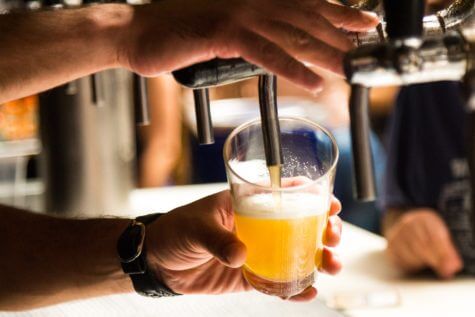
REIMS, France — Just like counting all the stars in the heavens, figuring out how many bubbles are in your beer seems pretty impossible too. However, scientists in France say they've accomplished that very feat. Their study reveals a half-pint of beer may contain up to two million tasty bubbles in each glass. Now you have something new to chat about when you're making small talk in a bar!
As most drinkers are aware, pouring fresh beer into a glass causes streams of bubbles to appear and rise. The result is the classic foamy head of countless bubbles at the top of a drink. When these bubbles start to burst, they release carbon dioxide gas which gives the beer its tangy flavor.
Where do these bubbles come from?
Around the world, beer is one of the most popular alcoholic beverages and light lagers are especially in demand. Brewers create lagers through a cool fermentation process. This converts the sugars in malted grains into alcohol and carbon dioxide. This however doesn't account for all of your future bubbles.
During the packaging process, distributors can add in more carbonation which gives beer extra fizziness. This is also why bottles and cans make a hissing sound when you open them and then form micrometer-wide bubbles during pouring.
This fizzy show also plays an important role during the drinker's sensory experience. Just like sparkling wine, bubbles carry both flavor and scent components to the drinker, sometimes tickling their nose.
In a previous study, researcher Gérard Liger-Belair discovered there are about one million bubbles in a single flute of champagne. Until now, the number produced by beer before it goes flat has been a mystery.
So how many bubbles end up in your glass?
Liger-Belair and Clara Cilindre started by measuring the amount of carbon dioxide which dissolves into a commercial lager just after pouring it into a tilted glass. This is the method bartenders use to keep the surface foam in check.
Using this number and a standard tasting temperature of 42 degrees Fahrenheit, the team calculated that the dissolving gas would combine to form streams of bubbles wherever there are crevices and cavities in a glass. These tiny bubbles are no more than 1.4 micrometers wide.
Researchers used a high-speed camera to reveal that the bubbles grew in size as they floated to the surface. Those bubbles capture and transport even more gas to the air right above the beer's foamy head. As the gas decreases in the beer, the bubbling eventually comes to a halt.
Before the beer goes flat however, the study finds there are anywhere from 200,000 to 2,000,000 bubbles in a half-pint of lager. Surprisingly, study authors discovered defects in the glass help to create more bubbles in beer than they do in champagne.
The study appears in the journal ACS Omega.










